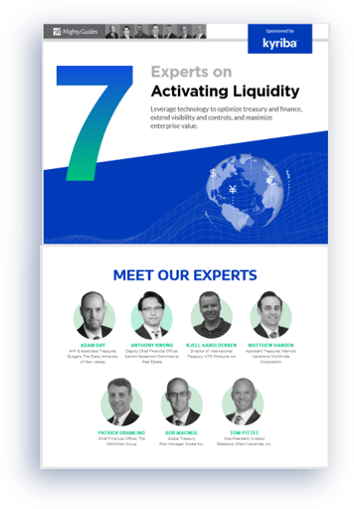| 15-06-2020 | Ger van Rosmalen | treasuryXL
“As a result of the stricter regulations, the financial sector has been forced to hire large numbers of people. Then, in practice, after intensive investigation on every report, it appears that more than 99% of the cases are false alarms! This results in frustrating and mind-numbing work for highly skilled workers.” Now the combination of Trade Finance and Compliance / AML (Anti Money Laundering) has been my focus for some time. I was always assuming that Compliance / AML supports the business (customers / products), but because of the stricter regulations, I think the business appears to be supportive of Compliance / AML.
This blog is in Dutch language.

Als je kijkt naar Trade Finance dan zie je dat de definitie vanuit de toezichthouder(s) en de vooraanstaande Wolfsberg Group een breed begrip is. Onder standaard Trade Finance Producten worden verstaan:
- Documentair Betalingsverkeer: zoals Letters of Credit en Documentaire Incasso’s. Bij deze standaard producten wordt gewerkt met handelsdocumenten zoals facturen, vervoersdocumenten, verzekeringsdocumenten en oorsprongsdocumenten. Door banken wordt gecontroleerd of deze in overeenstemming zijn met de onderliggende handelstransactie. Daarnaast zijn deze producten onderworpen aan internationale regelgeving uitgevaardigd door de ICC Internationale Kamer van Koophandel. Deze regels samen met de gebruikelijke internationale bancaire praktijk hebben ervoor gezorgd dat de banken de “financial crime“ risico’s beter kunnen controleren.
- Open Account: betalingen; het overgrote deel van de wereldhandel wordt afgewikkeld op “open account” waarbij er een simpele betaling plaatsvindt via het bancaire betalingssysteem voor geleverde goederen of diensten. Hier is de betrokkenheid van de banken ten opzichte van de onder punt 1 genoemde producten gelimiteerd tot de afhandeling van een zogenoemde “clean payment” en is men zich niet altijd bewust van de onderliggende transactie. Banken kunnen hier slechts de standaard AML en sanctie screening op de betaling uitvoeren.
Onder “financial crime” risico wordt verstaan o.a. witwassen, fraude, belasting ontduiking, omkoping, corruptie en terrorismefinanciering. De algemene perceptie is dat Trade Finance door de toezichthouders wordt gezien als een hoog risico. Maar in hoeverre klopt dit? Ten aanzien van “Open Account” betalingen is dit in veel gevallen juist en ben ik van mening dat we juist alert moeten zijn op het hoog risico bij “Open Account” betalingen. Echter in de gesprekken die ik had met de toezichthouder werd “Documentair Betalingsverkeer” juist gekwalificeerd als een normaal risico.
Het verschil zit hem voornamelijk in de mogelijkheden om bij documentair betalingsverkeer veel meer controles te kunnen uitvoeren”, wat bij “open account” betalingen niet het geval is. Veel van de genoemde risico’s bij Trade Finance om illegale verplaatsing van gelden te maskeren zijn bij “open account” zeer hoog. Denk hierbij aan: over-facturering, onder-facturering, meerdere facturen, te weinig verscheept, teveel verscheept, opzettelijke verduistering van het type goederen en spookverschepingen.
Al deze bovengenoemde aspecten worden bij “Documentair Betalingsverkeer” veel eerder gesignaleerd omdat de fysieke handelsdocumenten uitgebreid door de banken worden gecontroleerd. In de eerder genoemde gesprekken met de toezichthouder merk ik een grote nuancering. Waar de toezichthouder spreekt over “richtlijnen” worden deze bij Compliance afdelingen vaak vertaald in eisen en regels. Banken zeggen te voldoen aan de regels (of waren het richtlijnen?) van de toezichthouder en vaak ook The Wolfsberg Group principles.
Wat is The Wolfsberg Group? Zie hieronder de beschrijving die ik op hun website heb gevonden:
“The Wolfsberg Group is an association of thirteen global banks which aims to develop frameworks and guidance for the management of financial crime risks, particularly with respect to Know Your Customer, Anti-Money Laundering and Counter Terrorist Financing policies”.
Saillant detail: Het verbaast mij dan weer wel dat een simpele Googlecheck snel laat zien dat alle van de 13 genoemde banken boetes hebben gekregen voor het niet naleven van hun eigen “principles”.
Duizenden mensen zijn inmiddels aangenomen om 99% nutteloze checks te doen omdat we wel graag die 1% duistere praktijken boven water willen halen. Daar zijn niet alleen de banken de dupe van maar ook het grootste deel van het bedrijfsleven wat te goeder trouw zijn transacties wil afwikkelen. Belangrijk is dan ook dat bij Trade Finance transacties altijd een importeur of exporteur betrokken is, die relatie is van een bank. Het is essentieel dat de bank de ondernemer én zijn onderneming én activiteiten goed begrijpt! Toezichthouders verwachten van de banken dat zij de kennis van handelstransacties kunnen vertalen naar risico’s. Een gevolg kan zijn dat banken een intensiever contact onderhouden met klanten en er meer informatie-uitwisseling zal moeten plaatsvinden. Daarnaast is het van belang dat de beoordeling van risico’s wordt gedaan aan de hand van objectieve criteria en de persoonlijke mening van beoordelaars niet de boventoon mag voeren. Dit is onethisch en onprofessioneel.
Twee voorbeelden uit de praktijk ter verduidelijking
- Heel jammer dat een bank een Letter of Credit transactie van een ondernemer met een Afrikaans land niet wilde faciliteren alleen op basis van het feit dat ze amper te eten hebben in dat land!
- Of dat de export van gebruikte vrachtauto’s naar een politiek stabiel land ook op Letter of Credit basis niet werd goedgekeurd met als reden dat deze voertuigen zouden kunnen worden omgebouwd tot militair voertuig. Dit werd slechts gebaseerd op een persoonlijke veronderstelling en getuigt bovendien van gebrek aan kennis van zaken. Temeer ook omdat de betreffende exporteur zelf gebruik maakt van een geavanceerd Compliance/AML/Sanctie systeem vergelijkbaar met wat de banken zelf ook gebruiken en zelfs goede contacten heeft met het FIU ( Financial Intelligence Unit Nederland) inzake verdachte transacties.
Dat niet alles door systemen wordt afgevangen mag dit voorbeeld duidelijk maken waarbij een Nederlandse exporteur een “Open Account” betaling ontvangt van een Duits Ingenieursbureau en zonder “red flags” op de rekening wordt geboekt. Achteraf bleek dat de betaling weliswaar uit Duitsland kwam maar dat de goederen direct naar een (dubieuze) Scheepswerf in Rusland werden getransporteerd. Het grootste risico zie ik altijd nog bij de “open account” betalingen. En door vooral in gesprek te blijven met relaties, aandacht voor de klant, weten wat er speelt en gezond verstand laten prevaleren samen met geavanceerde (Compliance/AML/Sanctie) systemen die ongebruikelijke transacties zichtbaar maken zou Compliance in mijn ogen weer ondersteunend moeten worden aan de business (klanten en producten) en niet andersom.
Conclusie
Ook ondernemers doen er goed aan om hun eigen verantwoordelijkheid te nemen en te beseffen, dat men niet meer wegkomt met een simpele Googlecheck en wat financiële data om een relatie met een nieuwe afnemer of leverancier aan te gaan. Het is voor een bank een geruststelling als de relatie aantoont dat zij zorgvuldig te werk gaat en gebruik maakt van ook voor het MKB beschikbare Compliance/AML/Sanctie software. Toegang tot deze informatie voordat je een handtekening onder een contract zet helpt niet alleen van financiële risico’s te beperken maar beschermt ook de reputatie van de ondernemer.
De internationale handel is zeker in deze uitdagende coronatijd gebaat bij een optimaal samenspel tussen de toezichthouder met duidelijke heldere richtlijnen, banken die deze vertalen naar werkbare procedures en ondernemers die de noodzaak van extra controles begrijpen en daarnaar handelen. Zo kunnen we samen ondernemend Nederland nog beter stimuleren in dat waar we van oudsher goed in zijn, succesvol handel drijven in binnen én buitenland.

Ger van Rosmalen
Trade Finance Specialist












